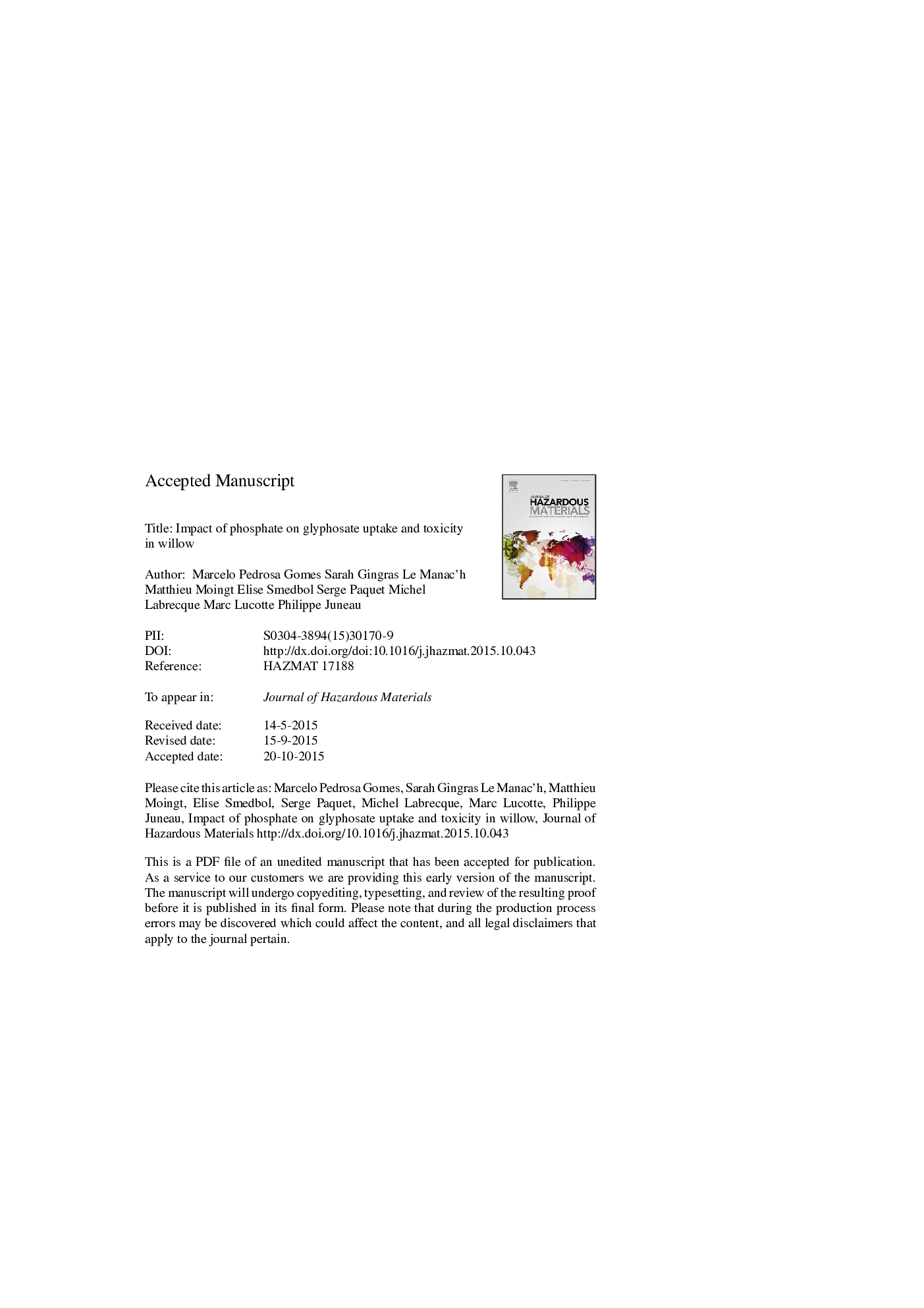| Article ID | Journal | Published Year | Pages | File Type |
|---|---|---|---|---|
| 575482 | Journal of Hazardous Materials | 2016 | 32 Pages |
Abstract
Phosphate (PO43â) has been shown to increase glyphosate uptake by willow, a plant species known for its phytoremediation potential. However, it remains unclear if this stimulation of glyphosate uptake can result in an elevated glyphosate toxicity to plants (which could prevent the use of willows in glyphosate-remediation programs). Consequently, we studied the effects of PO43â on glyphosate uptake and toxicity in a fast growing willow cultivar (Salix miyabeana SX64). Plants were grown in hydroponic solution with a combination of glyphosate (0, 0.001, 0.065 and 1 mg lâ1) and PO43â (0, 200 and 400 mg lâ1). We demonstrated that PO43â fertilization greatly increased glyphosate uptake by roots and its translocation to leaves, which resulted in increased shikimate concentration in leaves. In addition to its deleterious effects in photosynthesis, glyphosate induced oxidative stress through hydrogen peroxide accumulation. Although it has increased glyphosate accumulation, PO43â fertilization attenuated the herbicide's deleterious effects by increasing the activity of antioxidant systems and alleviating glyphosate-induced oxidative stress. Our results indicate that in addition to the glyphosate uptake, PO43â is involved in glyphosate toxicity in willow by preventing glyphosate induced oxidative stress.
Related Topics
Physical Sciences and Engineering
Chemical Engineering
Chemical Health and Safety
Authors
Marcelo Pedrosa Gomes, Sarah Gingras Le Manac'h, Matthieu Moingt, Elise Smedbol, Serge Paquet, Michel Labrecque, Marc Lucotte, Philippe Juneau,
